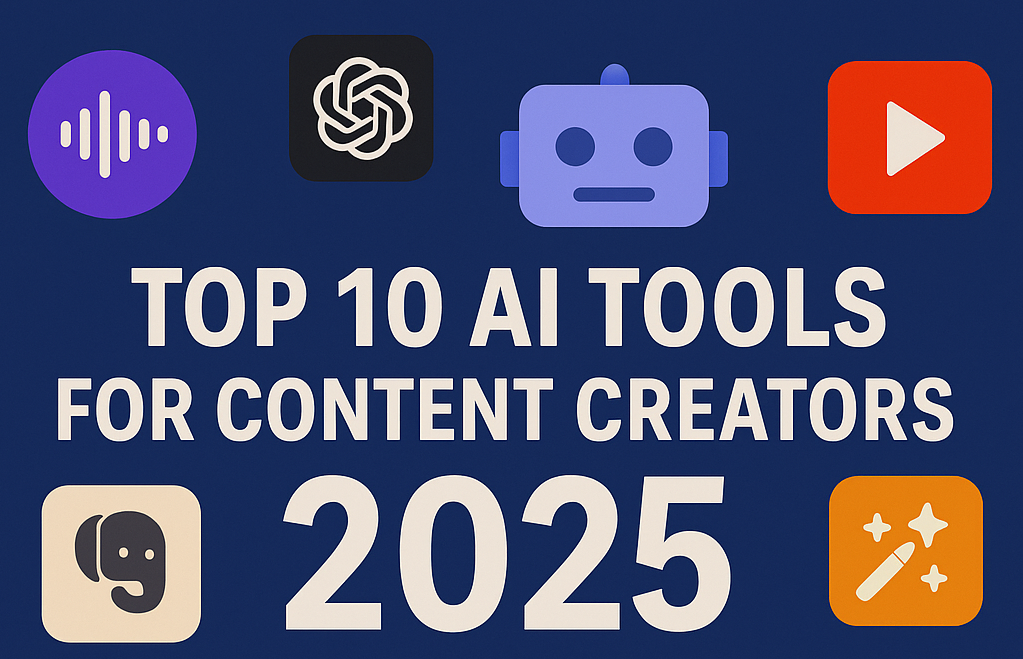Top 10 AI Tools Revolutionizing Productivity in 2025 (Technology)
Artificial intelligence (AI) is rapidly transforming various aspects of our lives, and its impact on productivity is particularly significant. By 2025, AI tools are poised to become even more sophisticated and integrated into daily workflows, offering unprecedented opportunities for individuals and organizations to enhance efficiency, streamline processes, and achieve greater output. This article explores ten AI tools expected to be at the forefront of this productivity revolution.
1. Advanced Natural Language Processing (NLP) Powered Automation Platforms

NLP has been steadily improving, and by 2025, advanced NLP-powered automation platforms will be commonplace. These platforms will transcend simple chatbot interactions and automated email responses. Imagine an AI that can understand complex legal documents, extract relevant clauses, and automatically draft summaries or responses, saving lawyers countless hours. Similarly, in customer service, these platforms will be able to analyze customer sentiment from unstructured text and route inquiries to the most appropriate representative, or even resolve issues autonomously with a high degree of accuracy and empathy.
2. Hyper-Personalized Learning and Training Systems

Generic training programs often fail to address individual learning styles and knowledge gaps. By 2025, AI-driven learning platforms will offer truly hyper-personalized learning experiences. These systems will continuously assess a user’s understanding of the material, adapt the curriculum in real-time, and provide tailored feedback. Using AI, these platforms can identify optimal learning methods, predict potential areas of struggle, and offer customized support. This promises to significantly reduce training time and improve knowledge retention across various industries.
3. AI-Driven Project Management Suites

Project management is often a complex and time-consuming undertaking. In 2025, AI-driven project management suites will offer intelligent features such as automated task allocation, risk prediction, and resource optimization. These systems will learn from historical project data to identify potential bottlenecks, suggest optimal timelines, and even proactively address potential conflicts. The ability to predict and mitigate risks before they escalate will drastically improve project success rates and reduce wasted resources.
4. Predictive Maintenance and Operational Efficiency Optimizers
Downtime due to equipment failure can be incredibly costly in manufacturing and other industries. AI-powered predictive maintenance systems will analyze sensor data from machines and equipment to identify patterns that indicate impending failures. By predicting these failures in advance, organizations can schedule maintenance proactively, preventing costly breakdowns and maximizing uptime. These systems will also optimize operational efficiency by identifying areas where processes can be streamlined and resource consumption can be reduced.
5. AI-Enhanced Code Generation and Software Development Tools
Software development is a complex and demanding process. AI is already making inroads into this field, and by 2025, AI-enhanced code generation tools will be capable of automating significant portions of the coding process. These tools will be able to generate code from natural language descriptions, automatically identify and fix bugs, and even optimize code for performance. This will not only accelerate software development but also make it more accessible to individuals with limited coding experience.
6. Intelligent Data Analysis and Visualization Platforms
The ability to extract meaningful insights from large datasets is crucial for informed decision-making. AI-powered data analysis and visualization platforms will automatically analyze data, identify trends and anomalies, and generate interactive visualizations. These platforms will be able to present complex information in a clear and concise manner, enabling users to quickly understand key insights and make data-driven decisions. Furthermore, the AI will be able to proactively identify emerging trends and alert users to potential opportunities or threats.
7. Robotic Process Automation (RPA) with Cognitive Capabilities
RPA automates repetitive tasks, but traditional RPA is limited in its ability to handle complex or unstructured data. RPA enhanced with cognitive AI capabilities will be able to handle more complex tasks, such as processing invoices, extracting data from documents, and making decisions based on that data. This will expand the scope of automation and enable organizations to automate end-to-end processes, freeing up human workers to focus on more strategic and creative tasks.
8. AI-Powered Recruitment and Talent Management Solutions
Finding and retaining top talent is a major challenge for many organizations. AI-powered recruitment and talent management solutions will automate many aspects of the hiring process, from screening resumes to conducting initial interviews. These systems will use AI to identify candidates who are a good fit for the company culture and have the skills and experience needed to succeed. They will also provide insights into employee performance and identify areas where employees may need additional training or support.
9. Smart Assistants for Personalized Task Management
Smart assistants, such as those on smartphones, will evolve into highly sophisticated personalized task managers. Using advanced NLP and machine learning, these assistants will understand individual user preferences, anticipate their needs, and proactively suggest tasks and actions. They will be able to schedule meetings, manage to-do lists, filter emails based on priority, and even automate complex workflows across different applications. This will allow users to focus on their most important tasks without being bogged down by administrative details.
10. AI-Driven Cybersecurity and Threat Detection Systems
As cyber threats become more sophisticated, organizations need increasingly advanced security solutions. AI-driven cybersecurity systems will be able to detect and respond to threats in real-time. These systems will analyze network traffic, user behavior, and other data to identify anomalies that may indicate a security breach. They will also be able to automate the process of responding to incidents, such as isolating infected systems and blocking malicious traffic. This will help organizations to protect their data and systems from cyberattacks and minimize the impact of security breaches.

Comments
Post a Comment